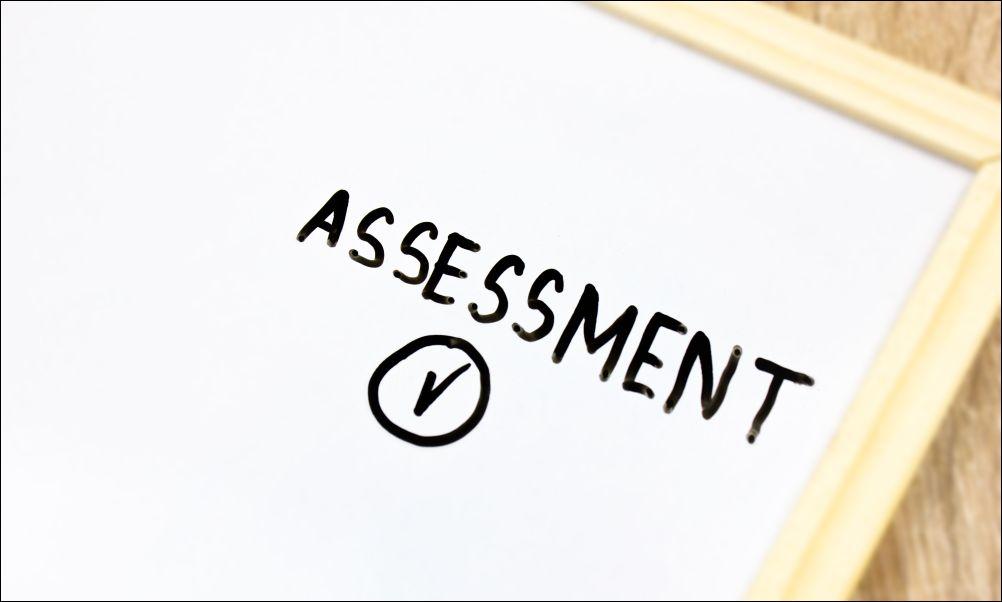The right to education and the resulting universal enrolment drives have undoubtedly led to more and more children attending school. This has resulted in greater diversity in the classroom here in India – not just in socioeconomic and cultural terms, but also in the varying levels of learning that different children are at.
When all students go through the same, conventional assessments, it can lead to failure, frustration, and eventual drop out.
Unfortunately, most practitioners believe that differentiating assessment compromises on fairness in testing. But students have different learning needs and abilities – administering the same test to all would therefore be unfair.
Approaching testing with this understanding of fairness makes assessments inclusive, as each learner has an equal opportunity to demonstrate their knowledge, skills and learning progress, and therefore at success.
Removing barriers – 5 ways
A key consideration in designing and administering an inclusive assessment is to remove any barrier to the demonstration of learning that places a learner at a disadvantage. Here are 5 ways that assessments can be made inclusive.
Multiple format assessments: Allowing students to respond in multiple formats to the same question when the concept being tested is the same.
For example, Let’s look at the question: ‘Explain land and sea breeze in about 500 words.’ Learners with language deficit are placed at a disadvantage as, despite their understanding of the concept, they may be unable to answer this question adequately or use appropriate prepositions required for accurate description. A way to make this assessment inclusive is to allow for answering in multiple formats – for example, through a diagram, in bullet points, or orally (depending on the extent of the student’s language ability). Yet another way is to change this into a multiple selection question. This way a student can still express their understanding of the concept being tested, without having to construct a response of their own.
In mathematics, learners can solve problems using manipulatives instead of pen and paper or use diagrammatic representations to demonstrate conceptual understanding instead of solving word problems.
Accommodations made to a test: When the testing conditions are changed.
Depending on the specific needs of the learners, the following accommodations may be given to help them take the test:
- Reading out the questions and instructions.
- Allowing for a scribe or device to record responses orally.
- Permission to use Braille and assistive devices.
- Given extra time.
- Permission to use additional support materials, such as tables, logs, an abacus, calculator, or vocabulary lists.
- Hints or picture cues to enable understanding the question or reduce cognitive load in recalling of facts needed for answering.
- Adjusting weightage to scoring guides/marking schemes, such as not penalising on grammar, spelling, or punctuation.
- A different test environment, for example, a quiet place with no distractions.
Modifications to a test: Modifying a standard assessment to test concepts at the level the learner is at.
This is extremely important in multi-grade multilevel classrooms, where content taught is differentiated and necessitates the assessment also to be differentiated. In classes with students at different levels of academic achievement, it becomes critical to create modified tests to ensure learning progress is measured. Most importantly, it keeps learners motivated by making progress from their individual starting points visible and allowing them to experience success. Without modified assessments, these learners often fail in tests, are frustrated, lose interest, and drop out. Modifying tests to reflect the academic level at which the learner is at allows teachers to gradually raise achievement levels without fear of failure and detention (which was also the main purpose for the ‘No-Detention Policy’).
Informal assessments: These include observation and concerted conversation with learners around their learning, which can be recorded as anecdotes.
This is especially useful in the lower stages of education, and in cases of lateral entry into the primary or middle stages, where learners are not fully tuned to formal systems of assessment. Observation and dialogue with learners provide teachers with key information they need to know about students’ current level of achievement and enables them to plan meaningful and relevant learning experiences. As the learners adapt to informal learning and assessment methods, teachers can introduce them to formal assessments in a phased manner. Informal assessments are extremely helpful in integrating out of school learners and reducing dropout rates on account of frustration and failure, thereby increasing retention.
Self- and peer assessment
Using self- and peer assessments are powerful ways of including learners, by keeping them involved and aware of their own learning and what they can do to improve. It allows learners to take an interest in assessment activities, drives learning and makes both learning and assessment meaningful for all students.
Key challenges
There are some key challenges in making student assessments inclusive.
The perspectives challenge
Two major drivers of ensuring inclusive practices are teachers’ beliefs about what inclusion means, and teachers having high expectations of all students. Ironically, these 2 also present 2 challenges towards achieving inclusion in both teaching and learning, and assessments.
There is a pressing need to clarify the assumption that fairness means equal treatment, and by creating accommodations and modifications for certain groups of students, teachers are being unfair to the others. Equally important is that teachers have high expectations from all students and genuinely believe that all learners can perform optimally, if they are provided with the right conditions. This understanding nudges the teacher to create those conditions for optimal performance.
The praxis/skills challenge
Once teacher beliefs and dispositions are addressed, the next challenge is capacity building for skills in differentiated teaching, followed by designing accommodations and modifications needed for inclusive assessments. Teachers need to be able to fully comprehend how to use stage-wise competencies and grade-wise learning outcomes to create learning ladders. This not only enables them to effectively break down concepts into smaller manageable chunks for scaffolding learning, but also calibrate modifications of a test at appropriate levels of learning as per the needs of their learners.
The implementation challenge
Teachers often find it daunting to administer several formats in large classrooms. This challenge can be addressed in 2 ways: one is to start small and plan key assessments in different formats until both the teacher and learner are comfortable and find them easy to make and use. The second is to use a mix of formal and informal methods, and involve learners in their own assessments, more often. With practice, teachers can increase the proportion of formal assessments over time.
Developing practitioners’ skills in designing and using inclusive assessments can boost learning outcomes for all children, while considerably reducing dropout rates and improving retention as well as performance.
Related reading
Gaunt, R., Cavendish, E., & Walker, R. (2021). Students’ Perspectives on Diversifying Assessment at the University of Cambridge. Diversifying Assessment Survey: Report to the Examination and Assessment Committee (EAC) May 2021. https://www.cambridgesu.co.uk/resources/reports/diversifyingassessmentreport/
Hanesworth, P. (2019, January 24). Inclusive Assessment: Where Next? Advance HE. https://www.advance-he.ac.uk/news-and-views/inclusive-assessment-where-next
Tai, J., Ajjawi, R., & Umarova, A. (2021). How do students experience inclusive assessment? A critical review of contemporary literature. International Journal of Inclusive Education, 1–18. https://doi.org/10.1080/13603116.2021.2011441
University of Oxford. (n.d.). IncludED: A guide to designing inclusive assessments. Centre for Teaching and Learning. https://www.ctl.ox.ac.uk/included-designing-inclusive-assessments
Gather a group of colleagues and discuss your own assessment
practice. Are you giving every student an equal opportunity to
demonstrate their knowledge, skills and learning progress?
Look at the 5 suggestions made by Assistant Professor Jwairia Saleem in this article. Which do you already incorporate into your regular practice? Which one could you introduce into an upcoming assessment task?



